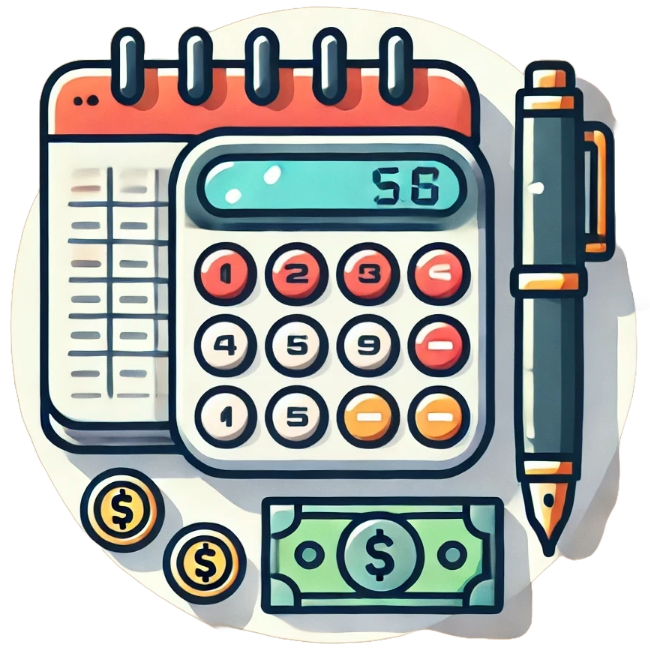Publication date: Sept. 12, 2024
What are CFDs (Contracts For Difference)?
CFDs (Contracts for Difference) are a popular, but controversial financial instrument that allows investors to speculate on price changes of various assets without actually owning the underlying asset. The appeal of CFDs lies in their flexibility and ability to trade in both rising and falling markets. Yet CFDs have also acquired a difficult image, largely due to the dangers of using leverage and investor inexperience. In this comprehensive guide, we take a closer look at what CFDs are, how they work, what the benefits and risks are, and why they have acquired a bad image.

Why CFDs have a difficult image
The difficult image of CFDs can be mainly attributed to aggressive marketing by certain brokers and a lack of knowledge among many retail investors. CFDs are often presented as an easy way to make a quick profit, especially due to the leverage offered by brokers. This leverage can allow investors to open positions much larger than their initial investment, potentially yielding huge profits. On the other hand, it can also lead to huge losses, especially if the market trades against you.
One of the biggest problems is that many retail investors do not fully understand how CFDs work and the risks involved. This lack of knowledge can lead to unwise trading decisions, especially if investors do not realize how quickly losses can accrue due to leverage. Brokers are required by law to display warning messages, such as the familiar one:
"CFDs are complex instruments and carry a high risk of rapidly mounting losses due to leverage. 67.6% of retail investors suffer losses on CFD trading with this provider. It is important that you fully understand how CFDs work and consider whether you can afford the high risk of loss."
How do CFDs work?
CFDs are derivatives, which means they derive their value from an underlying asset, such as shares, indices, currencies, or commodities. In a CFD speculation, you enter into a contract with a broker, betting on the price change of the underlying asset without owning the asset itself.
Leverage in CFDs
One of the most important features of CFDs is leverage. Leverage allows investors to take a much larger market position with a relatively small investment. This means that an investor only has to pay a fraction of the total value of a trade, while the potential profit or loss is calculated on the full value of the position.
This sounds attractive, but leverage can also lead to significant losses. Suppose a broker offers a leverage of 100. This means that a position is 100 times the size of the initial investment. If the market moves in your favor, you can make huge profits. However, if the market moves against you, losses can add up just as quickly.
A leverage of 100 means, for example, that a 1% increase in the value of the underlying asset can result in a 100% gain, but a 1% decrease can also result in a loss of your entire investment.
Example of how a CFD works
Let's take a concrete example of how a CFD works. Suppose you want to speculate on the AEX index, which is at a value of 725. Your broker offers a CFD on the AEX with a leverage of 100. If you decide to bet €100, your market position will be multiplied by the leverage, which means you are effectively trading with a position of €10,000.
If the AEX rises by 1%, you make a 100% profit on your initial investment, or €100. But if the AEX falls by 1%, you lose your entire stake. This shows how risky trading with high leverage can be.
The dangers of leverage
A common comparison used to illustrate the risks of a CFD is that of a Formula One car. Imagine having the opportunity to drive a Formula 1 car. This car is fast, and powerful and can reach 200 kilometers per hour in a matter of seconds, with a top speed of 350 kilometers per hour. While it is tempting to drive at full speed, you also know that the risks are enormous and that 70% of drivers would have an accident because of the high speed.
Like the Formula 1 car, leverage in CFDs is tempting, but it carries enormous risks. For professional traders who know exactly what they are doing, leverage can be a powerful tool. But for inexperienced investors, it can be a pitfall that leads to rapidly mounting losses.
Why CFDs can be a useful tool though
Despite the risks, CFDs can also be a very useful tool for certain investors. For example, CFDs offer flexibility to capitalize on both rising and falling markets. Moreover, CFDs allow you to trade a wide range of assets, such as stocks, indices, currencies and commodities, without having to own the underlying assets yourself.
Another advantage of CFDs is that you can trade them without using leverage. This means you can simply profit from the price movements of the underlying asset without the risk of rapidly mounting losses. If you choose to trade without leverage, any percentage change in the market is reflected in your profit or loss. In this case, you trade safely and in a controlled manner, just like someone who chooses to drive a Formula 1 car but sticks to the speed limit.
Example of trading without leverage
Suppose you want to speculate on the AEX, which is at a value of 725. You decide to buy a CFD without leverage. This means that you invest €725 and any percentage change in the AEX increases or decreases your investment by the same percentage. If the AEX rises by 1%, you make a 1% profit, and if the AEX falls by 1%, you lose 1% of your investment.
In this scenario, you trade without the risk of rapid losses due to leverage. You can still profit from market movements, but you do not run the risk of losing your entire investment due to small fluctuations in the market.

.svg)









